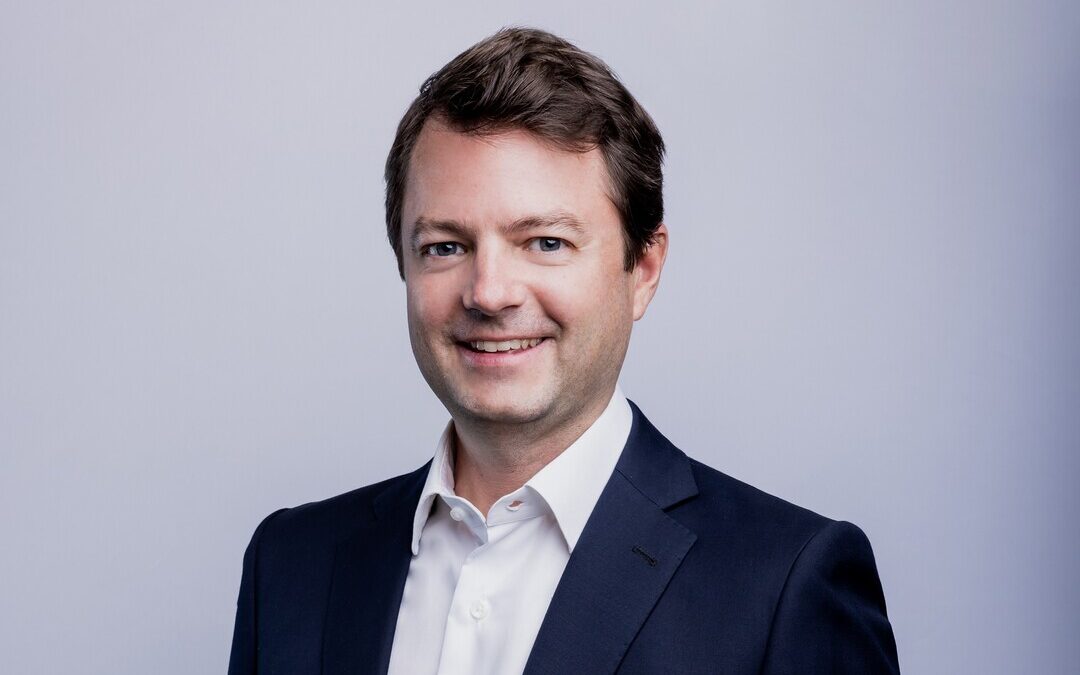Inside ICE’s Strategy to Build Giga-Scale Green Hydrogen Hubs
InterContinental Energy CEO Alexander Tancock shares insights on financing giga-scale green hydrogen projects reshaping global clean energy.
In just over a decade, InterContinental Energy has grown from a bold idea into one of the most ambitious developers of giga-scale green hydrogen and ammonia projects worldwide. Co-founded by Alexander Tancock in 2014, the company is behind a portfolio of over 100 gigawatts of planned renewable capacity across Australia and the Middle East, a scale that could redefine the global clean energy economy.
In an insightful interview with Nirmal Menon, Tancock reflects on the evolution of green hydrogen from a theoretical concept to a mainstream decarbonization strategy. He discusses the business realities of financing multi-billion-dollar clean energy hubs, the role of Asia-Pacific in the emerging green fuel trade, and how ICE’s patented P2(H₂)Node architecture could make large-scale hydrogen production more bankable, replicable and resilient.
NM: You founded InterContinental Energy in 2014 to build “green super-giants” capable of producing clean energy at scale. Over the past 11 years, what have been the most unexpected business realities or market shifts that have shaped that journey?
AT: When we started, the conversation about green hydrogen was largely theoretical. Today, it is a recognized pillar of global decarbonization. The biggest surprise has been how quickly the narrative has shifted from “why hydrogen?” to “how fast can we build it?” At the same time, the complexity of execution has increased, with every project now involving multi-country regulation, new certification standards, and first-of-a-kind financing structures.
Another major change is the investor mindset. The energy transition used to be seen as a moral choice, but now it is viewed as a strategic and economic one. That shift has brought in a new class of investors, including sovereign wealth funds and infrastructure managers, who see green hydrogen as a long-term, stable asset class rather than a speculative technology play.
NM: ICE’s ambition is remarkable: your project pipeline targets around 100 GW of renewables capacity by 2050 and a production potential of over 5 million tonnes per annum of green hydrogen. From a financing perspective, what are the biggest bottlenecks you face today in securing capital for the first phase of these giga-scale projects?
AT: We have come to understand that government support for green hydrogen will be as important as it was in the early decades of the nuclear, LNG, wind and solar industries. Except, instead of needing two to three decades of support, we expect green hydrogen to only need support until ~2040, after which it should work in the market because of the technology and scale-related price declines we are already seeing. Private capital still has a role to play, but government support will unlock major projects in the coming years.
NM: Giga-scale means huge up-front CAPEX, long lead times, and exposure to policy and offtake risk. How are you structuring risk-sharing across developers, investors, offtakers and governments to make these projects investable in the near term?
AT: We approach risk allocation through partnership. Developers take early-stage risk in securing sites, studies and permits. Investors come in as projects mature and engineering is standardized. Governments help through enabling infrastructure and stable policy frameworks. Offtakers commit to volumes and long-term contracts that provide price visibility.
It is about matching risk appetite with capability. By using our standardized P2(H₂)Node architecture, we give all parties greater confidence in cost and performance. That allows financiers to focus on commercial risk rather than technical uncertainty. Over time, these projects will be financed like large LNG or power assets that are predictable, stable, and replicable.
NM: You recently announced the patented P2(H₂)Node architecture, which you say can cut green hydrogen production costs by 10 to 20 percent. How does that technology shift the financial equation for gigawatt-scale hubs, and what remains the limiting factor even after deployment?
AT: The P2(H₂)Node architecture is a modular, islanded system that integrates renewable generation, electrolysis, compression and storage in one location. By eliminating the need for long-distance power transmission and grid interconnection, we reduce both capital expenditure and operating losses. This is not only a technical design but also a financial model that makes scale repeatable and cost curves predictable.
Even after achieving those savings, the limiting factor remains the same: the speed of policy goals, offtake commitments and infrastructure delivery.
NM: Many large energy infrastructure projects face scheduling, regulatory, and supply-chain delays. In the context of a coastal-desert megahub, what have you identified as your three highest priority areas to de-risk delivery?
AT: Using the P2(H2)Node means that these large projects are actually split into smaller and more easily deliverable ones using a standard building block. While the first phase requires enabling works, all subsequent phases benefit from the initial works and the de-risking achieved in phase 1. As such, phase 2 is materially lower cost and risk than phase 1, and so on.
Our portfolio isn’t in fact 3 projects, it is 50 repeatable phases that are co-located in a manner to reduce risk and increase optimization.
NM: The Asia-Pacific region is gearing up to be central in the green fuel economy. From ICE’s vantage point, developing hubs in Australia and the Middle East, how do you see APAC’s comparative advantage in this space relative to Europe or North America?
AT: Climate leadership has shifted East, with China now being clearly the world leader in climate aspirations, technology deployment and development. Alongside China, Japan, Korea, Singapore and other nations in the APAC region will be a huge source of demand. With China’s supply chain advantages, we can deploy best-in-class equipment in Australia and the Middle East at the lowest cost, producing green hydrogen for customers in the APAC region at the cheapest rates.
NM: Many Asian economies, including India, have ambitious decarbonization goals but face constraints such as grid infrastructure, regulatory frameworks, and capital availability. What lessons from your existing projects could help emerging APAC markets, and what must be adapted?
AT: We have a saying: “deserts don’t vote.” Green hydrogen needs the cheapest electricity to be viable, and on the grid, it must compete with others who want cheap power too (like voters and local industry). That inherent tension means grid-connected projects cannot be the scalable answer, and certainly even less so if the product is for export. Countries like India will produce some green hydrogen for strategic domestic markets, such as fertilizer, but most of APAC will import from Australia and the Middle East, where land is abundant. For example, our portfolio covers a land area almost 50 times the size of Singapore.
Our P2(H2)Node architecture model shows that you can generate, convert and store energy where it is produced, without relying on national grids that may be capacity-constrained. This allows countries to leapfrog infrastructure bottlenecks and move straight to decentralized hydrogen production in countries that have the space and resources needed.
NM: Given geopolitical shifts such as supply-chain resilience, trade blocs and import dependencies, how is ICE positioning itself to ensure APAC hubs are resilient and deliver value to both host countries and buyers in the region?
AT: Resilience comes from localization and diversification. While the Chinese supply chain is necessary to get things moving, over time, localization of production will build local capacity, from fabrication yards to port logistics and component manufacturing.
Our projects are designed to create long-term value for host nations through jobs, infrastructure, and skills, while giving buyers secure access to green fuels under transparent commercial terms with reduced political risk. The aim is to build an ecosystem where the energy transition benefits both ends of the supply chain, not just exporters or importers.
NM: Many supply-chain partners are still operating in higher-carbon modes, for example, in the manufacture of turbines and electrolyzers. How are you engaging your suppliers to align with your low-carbon goals, and how do you quantify that in project assumptions?
AT: The transformative scale of our projects is central to accelerating the energy transition. Delivering on this vision demands that our contractors and partners are not only committed to the same ambitious goals but are united with us and the broader community in taking collective responsibility for meaningful outcomes. True progress relies on this deep alignment, ensuring every party is actively contributing to our shared success.
NM: In terms of job creation and community engagement with Indigenous and First Nations stakeholders, how do you ensure that the operations of such mega-projects translate into equitable local economic benefits, not simply export-oriented infrastructure?
AT: It begins with partnership, not participation. At the Western Green Energy Hub, the Mirning People hold a 10 percent equity interest and a board seat in the project. This ensures that their voice shapes decisions from the start. Export infrastructure only delivers long-term value if it builds local capability. By embedding skills, education, and procurement pathways in our project design, we ensure the benefits extend far beyond fuel exports.
NM: Looking ahead to 2030, what do you regard as the most realistic “step change” moment for ICE, and what will make it happen?
AT: The decisive moment will be the first final investment decision on a giga-scale project, the point where the model moves from concept to construction. It will validate over a decade of development, standardization and partnership building. What will make it happen is convergence: mature policy, committed offtake, and proven engineering through the P2(H₂)Node system. Once that happens, replication becomes exponential and the journey to 100 GW by mid-century becomes not just possible but inevitable.
Nirmal Menon
Related posts

Subscribe
Error: Contact form not found.


